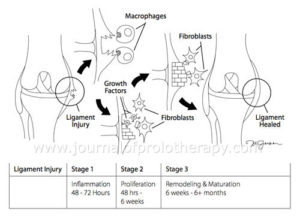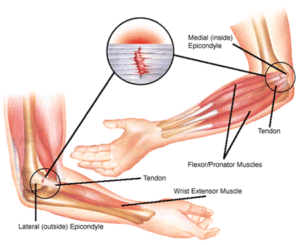Cryotherapy for Health
WHOLE BODY CRYOTHERAPY
Whole body cryotherapy is based on neuro-reflexive processes induced by the intense and brief effect of extreme cold on the body surface. This explains why its therapeutic consequences not only benefit the areas where it is applied, but also the deeper tissues.
The effects of cryotherapy on health can be summarized into:
- Relief of pain (even for chronic pain)
- Inhibition of inflammation and immunomodulation
- Effect on the musculoskeletal system
- Functional improvement of the joints
- Regulation of central nervous system activity
- Sense of well-being
1. DERMATOLOGICAL
1.1 Psoriasis
1.2 Atopic Diseases:
Atopic dermatitis / Neurodermatitis
2. SKELETAL MUSCLE SYSTEM
2.1. Ankylosing Spondylitis
2.2. Osteoarthritis
2.3. Spine syndrome
2.4 Tendinopathies
3. NERVOUS SYSTEM
3.1. Chronic pain
3.2. Sleep disorders
3.2.1. Primary Insomnia
3.2.2. Secondary Insomnia
3.3. Mental health
4. IMMUNOLOGICAL
4.1. Fibromyalgia
4.2. Immune-mediated inflammatory disorders
4.3. Rheumatoid arthritis
5. NEUROLOGICAL
5.1. Multiple sclerosis
5.2. Balance and coordination of movement
What is the benefit of cryotherapy in health?
- Bronchial asthma
- Immune-mediated disorders
- Psoriasis
- Atopic dermatitis
- Neurodermatitis
- Arthrosis
- Chronic pain
- Ankylosing spondylitis
- Multiple sclerosis
- Equilibrium and coordination of movement
- Child brain paralysis
- Syndrome of the spine
- Tendinopathies
- Fibromialgia
- Rheumatoid arthritis
- Sleep disorders
- Insomnia Primary
- Insomnia Secondary
- Stress, anxiety or depression
INTRODUCTION
Whole body cryotherapy is based on neuroreflexive processes induced by the intense and brief effect of extreme cold on the body surface.
This explains how it is possible that its undoubted therapeutic consequences not only benefit the areas on which it is applied, but also those deeper tissues that it is not possible to reach with an exposure to the extreme cold of 3 minutes.
Whole Body Cryotherapy has clearly analgesic and anti-inflammatory effects.
The effects can be summarized in the following:
- Pain relief.
- Inhibition of inflammation and Immuno-modulation.
- Effect on the musculoskeletal system.
- Functional improvement of the joints.
- Regulation of the activity of the central nervous system, feeling of well-being.
APPLICATIONS OF CRYOTHERAPY IN MEDICINE
1. SKIN DISEASES
1.1. Psoriasis
 Is an immunological inflammatory disease whose clinical expression attacks the skin. The immune system causes a very aggressive shedding leading to chronic skin inflammation.
Is an immunological inflammatory disease whose clinical expression attacks the skin. The immune system causes a very aggressive shedding leading to chronic skin inflammation.
It has been observed that the inflammatory stimulus generated increases the rhythm of cell division and keratinocytes and as a result, the skin regenerates in 5 to 6 days instead of 1 month which is the normal time for healthy skin. The normal skin renewal process is modified and a pathological shedding is produced. The areas affected are clearly-defined and are usually very itchy.
The study of some patients has allowed the detection of certain faults in several genes that might be responsible for this disease.
We must differentiate between three types of psoriasis: Psoriasis vulgaris, pustular psoriasis (raised bumps on the skin filled with pus) and psoriatic arthritis, which occurs simultaneously with joint inflammation. Different varieties of psoriasis may change throughout life and more than one may appear at the same time. The early stage of the disease, which comes after the patient is 20 years old, seems to be more strongly linked to genetics than the advanced stage which appears after the patient is 50 or 60 years old. The activity of this disease varies to a large extent and is usually produced in episodes.
Since psoriasis still has no cure, the main area of interest is the treatment of its symptoms. Together with a local treatment, usually with ointments, medicines are used against systemic effects including those which perform in the immune system, including phototherapy, laser treatments or special therapies in spas and rehabilitation centers.
Whole-body Cryotherapy has entered the therapeutic spectrum for psoriasis in the last years. Currently it is part of what many cold therapy centers offer, and it is recommended by organizations and associations supporting psoriasis patients. Many different experiences now show positive results. A treatment cycle should last 4 to 6 weeks and includes 12 to 18 exposures to cold. The program for these cases will be medium or moderate. It is preferable to choose an inpatient treatment associated to a change in the environment instead of an outpatient therapy. It is important to eliminate, with extreme care, any remains of topical use medicines such as ointments or creams before entering the cryosauna. The generally recommended treatment regimen consists of 3 sessions per week, alternating days, during 4 to 6 weeks. This will be retaken 4 to 5 times per year. These patients will take a Beginner program which is less intense, in order to test their tolerance. Afterwards, they will take a medium-intensity program – Moderate is the most appropriate program in this case.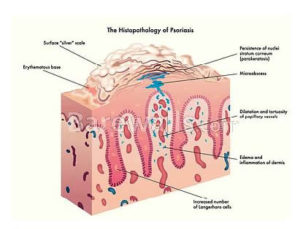
There are various experiences in relation with the effect that cold has when treating different types of psoriasis. Psoriasis vulgaris seems to be the type of psoriasis that presents a better response to cold stimulus, since the itching and the shedding intensity decrease after a few days. These good therapeutic results allow a significant regression of the disease and, in some cases, injuries are reduced to just non-itching skin redness. Whole-body Cryotherapy can also have therapeutic effects on the other two types to a lesser extent. It reduces inflammation in the affected joints.
It can be presumed that the therapeutic effect lasts a few months, and that it is convenient to take a cold therapy not only at the beginning of the episodes or when they are strong, but also as a prophylaxis when the symptoms are not especially strong.
In order to get good results, various factors that allow the symptoms of the disease to remain have to be taken into account. This is the reason why it is desirable to complete the treatment with a behavioral change: reducing the consumption of stimulants, controlling weight, correcting sleep patterns and getting psychological support to manage stress and using relaxation techniques. The psychological component in psoriasis is extremely important in order to succeed. Stress management disorders may aggravate the symptoms or be related to their activation, even after some time.
Integrity of the skin is particularly important when it comes to keep an appropriate social interaction, as the personal appearance is necessarily influential in our relationship with others. The observable pathological conditions of the skin affect self-confidence and self-esteem, and can have a negative impact on social acceptance, which might imply isolation. New clinically important health disorders might then be developed. This is why it is recommended to analyze behavioral problems before or during Whole-body Cryotherapy with a doctor or having the support of a psychologist if needed. The efforts to adjust the level of central activity and correct the modified sleep patterns may be effectively reinforced by using cold. It is also convenient to practice relaxation techniques regularly.
1.2. Atopic diseases
The term “atopy” defines this group of diseases as rare, and refers to a common immune mechanism and to the usually hereditary property of the organism to be hypersensitive to certain external stimuli. The result of this hypersensitivity is evidenced by diseases that can appear in different organs or tissues. That is the case of atopic dermatitis or eczema.
However, recent studies show that these diseases are not only a hyperreaction of the organism to the environment, but also that the genetic factors play a crucial role when it comes to its causes. This statement entails differences in the denomination of the diseases, so there are two different types:
● Endogenous disorders (intrinsic, non-allergic).
● Exogenous disorders (extrinsic, allergic).
Both types of atopic dermatitis carry skin inflammation. As it happens in psoriasis, the positive influence of Whole-body Cryotherapy on atopic dermatitis (skin inflammation and itching) was discovered by accident in patients who had gone through a cold therapy due to joint inflammation and who appreciated a significant improvement of their dermatitis.
Many people suffering from neurodermatitis come to cryotherapy centers to experience a relief of their difficult condition.
Atopic dermatitis / Neurodermatitis
 Many patients are dissatisfied with the treatment received to cure their disease. This is not due to a failure of the procedure, but to the fact that the studies carried in this area have not been able to develop causal therapeutic approaches yet. Also, in comparison with some medicines, the other therapies in use are not accepted by the patient, which is a prerequisite for a successful treatment. Furthermore, a single line of therapy is usually used, which means that diverse factors that encourage the disease are put aside. It is also important to take into consideration the fact that Whole-body Cryotherapy cannot fully replace other established treatments.
Many patients are dissatisfied with the treatment received to cure their disease. This is not due to a failure of the procedure, but to the fact that the studies carried in this area have not been able to develop causal therapeutic approaches yet. Also, in comparison with some medicines, the other therapies in use are not accepted by the patient, which is a prerequisite for a successful treatment. Furthermore, a single line of therapy is usually used, which means that diverse factors that encourage the disease are put aside. It is also important to take into consideration the fact that Whole-body Cryotherapy cannot fully replace other established treatments.
Up to 30 sessions of exposure to cold may be necessary depending on the severity of the clinical picture.
In this sense, the patient should remain hospitalized (in a clinic or a spa) when going through cryotherapy in order to eliminate the constraints, sometimes related to stress and other psychological factors that promote the disease. Topical medications, such as ointments or creams have to be removed before the cold session and reapplied afterwards. In general, any previous treatment should not be suddenly interrupted.
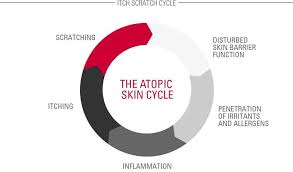
The itching tends to decrease during the first days of treatment, and so does the skin inflammation after around a week. In addition to the anti-inflammatory effect of cold, the analgesic effect is also important regarding the itching. It is believed that nerve stimuli resulting from itching are driven to the spinal cord by the same afferent channels than the painful stimulus. It can therefore be presumed that the alleviation of itching through a brief exposure to extreme cold is produced by the same mechanism as pain relief. The afferent nerve fibres are responsible for the transmission of cold and their conduction velocity is higher than C fibres’, which are responsible for itching signals. The fast conducting fibres inhibit the slow ones. An excitation competition is then established in the ascending nerve pathways. The consequence is the inhibition of itching by desensitizing and even deactivating itching receptors. The capacity of detecting these stimuli is therefore reduced.
It is recommended to go through a behavioral therapy along with cryotherapy. Relaxation techniques, stress management, reduction of social fears or improvement of self-control to avoid scratching could be used. Parents whose children suffer from neurodermatitis are encouraged to implement a probiotic therapy in order to restore their intestinal flora, which can regulate the damaged immune functions. This therapy should be taken before Whole-body Cryotherapy.
MUSCULOSKELETAL SYSTEM
2.1. Ankylosing spondylitis
 Ankylosing spondylitis is an immune-mediated inflammatory rheumatic disease that affects movement. It is characterized by ossification and curvature of the spine, although it can also affect joints out of the spine, especially lower extremities and less often internal organs.
Ankylosing spondylitis is an immune-mediated inflammatory rheumatic disease that affects movement. It is characterized by ossification and curvature of the spine, although it can also affect joints out of the spine, especially lower extremities and less often internal organs.
The inflammatory process produces pain, stiffness and restriction of joint function. Severe pain may eventually produce tendon inflammation.
Ankylosing spondylitis is nowadays intractable addressing its causes. Therefore, treatments aiming to inhibit pain and inflammation turn out to be more important. The treatment has to be multidisciplinary, as other treatments apart from the medication therapy are used as well, such as physiotherapy, physical therapy and, in case of necessity, radiotherapy. Whole-body Cryotherapy is today an integral element of the treatment for certain conditions. Its effect is sufficiently proved.
This therapy should be used within the framework of a clinical treatment -inpatient- consisting of 2 sessions per day (or 3 in case of great activity) during 2 to 3 weeks. Medical evaluations about the progress of the treatment should take place every 2-3 days.
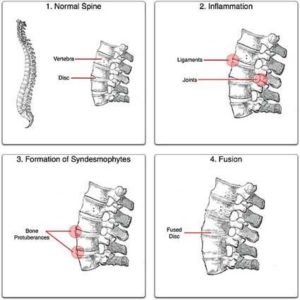 Nevertheless, in outpatient cases, 10-15 sessions of exposure to cold are usually sufficient even when there is a high degree of inflammatory activity. This causes a relief of the symptom picture in terms of pain reduction and movement restrictions. A shock treatment consisting of 5 sessions during the 2 first weeks using a medium intensity Moderate upper area program is recommended to this effect. It will be followed by a maintenance therapy consisting of 2 or 3 sessions per week during 1 or 2 months using the same program 3 or 4 cycles per year will be planned.
Nevertheless, in outpatient cases, 10-15 sessions of exposure to cold are usually sufficient even when there is a high degree of inflammatory activity. This causes a relief of the symptom picture in terms of pain reduction and movement restrictions. A shock treatment consisting of 5 sessions during the 2 first weeks using a medium intensity Moderate upper area program is recommended to this effect. It will be followed by a maintenance therapy consisting of 2 or 3 sessions per week during 1 or 2 months using the same program 3 or 4 cycles per year will be planned.
Additionally, Whole-body Cryotherapy is particularly relevant for diseases connected to psoriasis or chronic intestinal inflammation (Crohn’s disease). Both of them are considered as autoimmune diseases.
2.2. Arthrosis
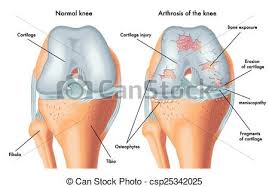 It is a degenerative joint disorder produced by cartilage wear and tear. Arthrosis is the most common rheumatic disease. It causes pain, inflammation and reduction of joint movement.
It is a degenerative joint disorder produced by cartilage wear and tear. Arthrosis is the most common rheumatic disease. It causes pain, inflammation and reduction of joint movement.
Whole-body Cryotherapy can be used in all stages of the disease, but it is preferable to start in the early stage, when the cartilage is still functional.
There are several reasons for its use: arthrosis is a common disease, especially among the elderly. Besides that, there is no possibility of offering a treatment focused on the very cause in these days, so there are studies that try to find efficient symptomatic treatments, and Whole-body Cryotherapy has given good results thanks to its systemic effect. This is important at different levels, since arthrosis does not usually affect just one joint, but several (big and small). This, unlike local therapies, makes Whole-body Cryotherapy advantageous because it works simultaneously on all the spots and joints affected.
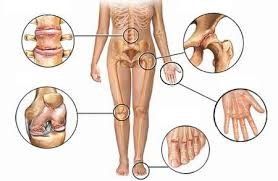 Moreover, thanks to its effects, other clinical aspects related to emotional factors, among others, are also improved. Another reason supporting its use is the fact that its therapeutic effect, in relation to pain and inflammation, often lasts several months or even longer.
Moreover, thanks to its effects, other clinical aspects related to emotional factors, among others, are also improved. Another reason supporting its use is the fact that its therapeutic effect, in relation to pain and inflammation, often lasts several months or even longer.
Arthrosis develops directly in the joint cartilage, where micro-fissures enlarge gradually. The cartilage scrapes and produces waste that moves freely through the joint. Plus, some tissue structures and small pieces of cartilage may be detached or pulled out. The cells in the damaged cartilage tissue release inflammatory substances, and the inner membrane of the capsule gets inflamed. This means that the cartilage will not stop suffering damage.
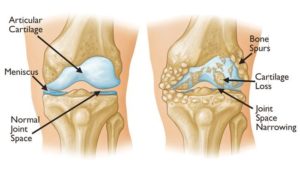 This wear and tear is favored by several factors: less stretch and less water content in the cartilage, thinning tissue and limitations in nutrient supply and waste disposal. These factors come with aging and decrease the capacity of cushioning. Too much weight is also especially negative for joints like hip joint and knee joint. This increases pressure on cartilage and affects their functionality.
This wear and tear is favored by several factors: less stretch and less water content in the cartilage, thinning tissue and limitations in nutrient supply and waste disposal. These factors come with aging and decrease the capacity of cushioning. Too much weight is also especially negative for joints like hip joint and knee joint. This increases pressure on cartilage and affects their functionality.
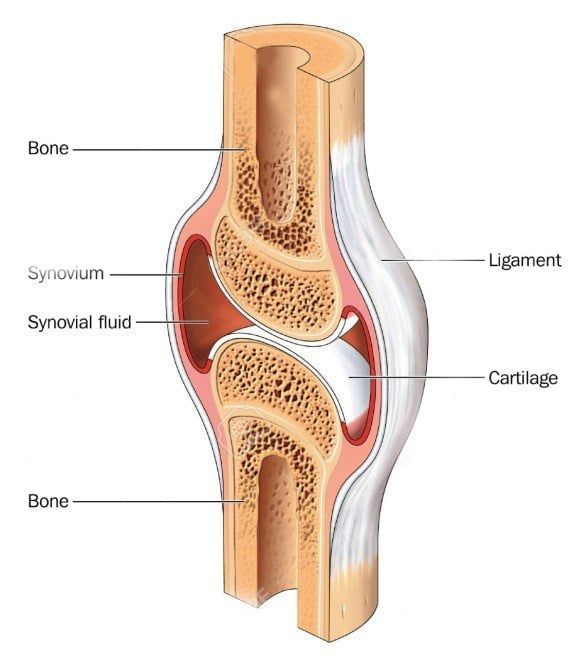 Since joint tissue does not have its own blood supply, nutrients and oxygen are transmitted through synovial fluid coming from the inner membrane of the joint capsule. This requires an optimal pressure index on the cartilage, meaning that a permanent disorder at this level leads to a chronic lack of supply to the tissue.
Since joint tissue does not have its own blood supply, nutrients and oxygen are transmitted through synovial fluid coming from the inner membrane of the joint capsule. This requires an optimal pressure index on the cartilage, meaning that a permanent disorder at this level leads to a chronic lack of supply to the tissue.
Nevertheless, other factors that facilitate the disease to a large extent are hormonal influences (post-menopause arthrosis of the hands) or partial and chronic deterioration of the joint functions due to bad posture, repetitive efforts and insufficient joint movement.
In an advanced stage, the joint becomes significantly swollen and warm, especially if the arthrosis has been activated by inflammatory processes.
The development of arthrosis is often accompanied by severe pain caused by:
● Increase of pressure on the joint surface of the bone affected.
● Inflammation of the inner membrane of the joint capsule.
● Expansion of the joint capsule as a consequence of the joint effusion.
● Chronic irritation of the peri-articular tissue structures, ligaments, tendons and muscles.
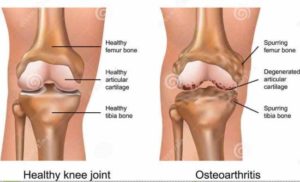
The pain mainly appears during and after exercise and is relieved with rest and at night. However, pain during rest will appear later leading to greater movement limitations.
Arthrosis is hardly ever self-healed. Nevertheless, a repairing process of connective tissue can be activated in the final stage of the disease as a result of chronic inflammation and damage of bones. This process leads to a partial substitution of the lost cartilage, a reduction in symptoms and a better functionality.
Many of the problems associated with arthrosis are due to the fact that this disease affects the muscles and the connective tissue. This is why the response to pain in damaged joints results not only in changes in proprioception in the joints, but also in the peri-articular tendons and muscle groups. However, a normal nerve transmission from these areas is essential for the proper functioning of muscle contractions and the adequate maintenance of the sense of balance. As a result of the modified afferent impulses, there can be coordination disorders and instability when walking.
Whole-body Cryotherapy has an impact on the main components of the disease:
● Onset of pain.
● Inflammatory process.
● Functional alteration of muscle groups near joints.
Although the pain caused by arthrosis depends on different harmful factors, whole- body cold sessions allow to reduce pain significantly and to counter joint blockade. This procedure enhances the conditions to use other techniques such as passive and active kinesiotherapy. The patient should try to avoid too much tension and pressure when doing exercise after pain is gone relatively fast. The therapist should help find a reasonable level of activity in order to improve the nutrient supply to the cartilage through the normalization of the pressure in the joint. Plus, a wider movement stimulates the substance supply to the cartilage cells.
As it happens with the pressure level, a certain degree of viscosity of the synovial fluid is necessary to maintain the metabolic balance of the joint cartilage.
In this regard, Whole-body Cryotherapy has an advantage over standard local cold applications. It is a brief therapy that reaches the deepest layers of tissue and inner space of the joint for a short time in order to avoid negative effects on the flow properties of the synovial fluid.
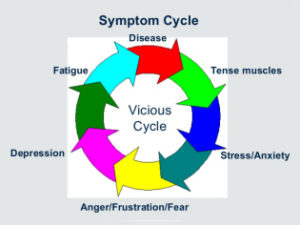 Cold applied throughout the body effectively reduces not only pain, but also the increasing temperature in the area, as well as the swelling. This means that the inflammatory process is completely considered from a therapeutic point of view.
Cold applied throughout the body effectively reduces not only pain, but also the increasing temperature in the area, as well as the swelling. This means that the inflammatory process is completely considered from a therapeutic point of view.
Whole-body Cryotherapy does not fully replace other demonstrated treatments for arthrosis. It must be part of a multidisciplinary therapeutic concept including medicine intake, kinesiotherapy right after the cold sessions, muscle relaxation techniques and surgical treatment.
Besides that, it is possible to discuss with the doctor whether a -temporary- reduction or suspension of the medicine treatment can take place if the results of cryotherapy are satisfactory.
2.3. Central cord syndrome
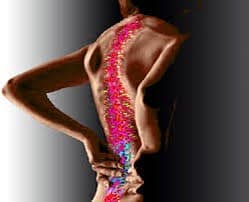 Whole-body Cryotherapy is also indicated for central cord syndromes, especially for the cervical and lumbar spine. These syndromes are part of our everyday life under designations like “disc injury”, “low back pain” or “sciatic pain”.
Whole-body Cryotherapy is also indicated for central cord syndromes, especially for the cervical and lumbar spine. These syndromes are part of our everyday life under designations like “disc injury”, “low back pain” or “sciatic pain”.
 These disorders usually called “back pain” are caused by degenerative changes of the intervertebral discs and the zygapophysial joints. However, the muscles and ligaments that support and fix the spine can also be affected both somatically and functionally. Inflammatory processes can be found parallel with the degenerative changes at their onset.
These disorders usually called “back pain” are caused by degenerative changes of the intervertebral discs and the zygapophysial joints. However, the muscles and ligaments that support and fix the spine can also be affected both somatically and functionally. Inflammatory processes can be found parallel with the degenerative changes at their onset.
Back pain has a strong tendency to become a chronic disorder and leads to physical inactivity, locomotive system stress and depressive-reactive clinical pictures.
A cold treatment can complete and even replace other standard therapies. Muscle tension decreases when nociceptive impulses are reduced. When cryotherapy is used in time and in combination with behavioral interventions, it is possible to effectively stop this disorder before it becomes chronic. Besides, when there is pain after a surgical intervention of the spine, the results of using Whole-body Cryotherapy are really compelling.
It is usually recommended to apply a series of up to 20 cold sessions to treat central cord syndromes in order to reduce the painful muscle tension. The treatment will consist of 3 sessions per week, alternating days, during 7 consecutive weeks using the Moderate upper area program. This regime is to be retaken 3 to 4 times per year.
2.4. Tendinopathy
Tendinopathies are degenerative diseases of the connective tissue of tendons (tennis elbow, Achilles tendonitis, heel pain). Their inflammatory symptoms are pain, loss of strength and dysfunction, haematoma or pain when contracting and stretching. They are favoured by a chronic overload, and usually respond quite well to Whole-body Cryotherapy.
Pain when moving is related to these disorders. It is sometimes very severe, and is relieved after 5 to 10 sessions. However, early efforts are to be avoided, and the return to normal habits must be gradual.
NERVOUS SYSTEM
3.1. Chronic Pain
Chronic pain is not protective and is not an injury, but a disease. It is a persistent pain lasting more than one month after the injury and can remain for a long time even after the complete healing. It is usually resistant to number of treatments and is associated to important psychological symptoms: depression, anxiety, fear, insomnia and behavioral disorder, especially in social relations.
The mechanism that controls the painful process is related to the decrease of nerve conduction velocity, the inhibition of nociceptive fibres and indirectly the decrease of inflammation, oedema, muscular spasm, etc. The application of superficial intense cold blocks or reduces the activity of the fibres in charge of the transmission of nociceptive information, and the conduction velocity of C fibres is also reduced.
When Whole-body Cryotherapy is applied on a patient that has pain, the physiological process that is triggered starts with the activation of the thermoreceptors on the skin surface area. A competition between the transmission of the nerve impulses of both pain and extreme temperature stimuli is established, being nociceptors responsible for transmitting pain and thermoreceptors for cold. The signal of extreme cold predominates as it is misguidedly translated by the central nervous system as an imminent risk to life.
3.2. Sleep disorders
Insomnia is the fact of having difficulty to fall asleep, waking up frequently during the night or waking up earlier than normally in the morning. It causes daytime sleepiness and decreases ability to concentrate and to stay active during the day. It is often due to stress, anxiety, depression, heart rhythm disturbances, etc. A long pharmacological treatment should be avoided, and it is convenient to use other techniques such as Whole-body Cryotherapy, behavioural therapy, relaxation techniques and prophylactic measures to help people sleep and get a restful sleep.
If there are neither organic nor psychological causes of the sleep disorder, it is known as primary insomnia. On the contrary, when the disorder is due to chronic pain, it is called secondary insomnia since it is the result of another health disorder.
Experience has demonstrated that, unfortunately, people often think that they are affected by sleep problems even when they are not. Not every difficulty to fall asleep or sleep during the night must be considered as a pattern of sleep disturbance. This belief often leads to a real sleep disorder, especially when using sleeping pills. Before using pills, it is important to understand that sleep is a result of wakefulness. Therefore, it is possible to improve it by simple methods such as physical activity or a behavioral change when facing problems. Physical therapies based on a “stimulus-response-adaptation” principle are suitable to regulate altered sleep patterns. A mental balance and a better muscle metabolism are then achieved. These therapies can even work as a preventive method before the development of the disorder.
3.2.1. Primary insomnia
This disorder has easily recognizable characteristics:
● Permanent increase of level of activity with unrest and fears during the night and long waking times.
● Tense and unsuccessful attempts to fall asleep, fear of the night.
● Recurrent anxious thoughts impeding sleep, often during waking times.
● Agitation, muscle tension and vegetative symptoms such as palpitations.
● Worsening of stress management and more secretion of stress hormones.
● Daytime sleepiness and poor general performance.
The diagnosis should be based, to the extent possible, on a polysomnography carried out in a sleep laboratory in order to collect data about brain waves and eye movements during sleep. These criteria will help create a sleep profile.
The sleep pattern is normal when:
● It is easy to fall asleep and sleep sufficiently.
● The stages of sleep follow regular cycles and three or four cycles of sleep take place during the night.
● The stages of deep sleep occur mainly during the first half of the night, and the stages of dreaming occur during the second half.
● There are no frequent awakenings.
The sleep profile changes with the aging. This process may be due to physiological causes. It has therefore clinical relevance.
● Deep sleep is less frequent, and stage 4 of deep sleep is rare or non-existent. Stage 3 of deep sleep is shorter.
● The sleeping time is reduced and waking times become more and more common.
Whole-body Cryotherapy can improve insomnia significantly. The results are observable after one week taking one 3-minute session per day.
3.2.2. Secondary insomnia
This sleep disorder has the same criteria and very similar symptoms to primary insomnia. Its causes are different, though: it is due to an organic disorder, as it happens with chronic pain. It often becomes a chronic disease with a negative impact and more pain due to an insufficient treatment for pain or a wrong treatment for a non-existent sleep disorder.
The analgesic effect of Whole-body Cryotherapy is a successful therapy for treating insomnia.
Few sessions are usually enough to reduce pain and get a better sleep. Pain reduction after the application of cold allows to quickly fall asleep and to dispense with the medicine intake.
The standard treatment regime for both primary and secondary insomnia consists of a shock therapy (1 Whole-body Cryotherapy session per day) during 1 week using the Strong program or intense cold, to a final amount of 5 sessions. It will be followed by a maintenance therapy cycle consisting of 2 sessions per week during 1-2 consecutive months. It is recommended to take 2 or 3 cycles per year. Effectiveness is higher if the session is taken in the evening.
3.3. Mental Health
Depression is a temporary or permanent mood disorder. It includes sadness, unhappiness and guilt. It does not allow people to fully or partly enjoy events of everyday life.
Depressive disorders may be accompanied by anxiety at different degrees.
Anxiety consists of an unintentional worry about a future damage. It carries psychosomatic symptoms such as tension that try to warn the individual about an imminent danger so that they can implement measures to face the threat.
Whole-body Cryotherapy is a complementary symptomatic therapeutic option in cases of depression and anxiety. It produces beneficial effects at a somatic and psychic level.
Cryotherapy creates a situation of organic stress that stimulates the pituitary gland and promotes the release of neuropeptides -endorphins- from the spinal cord to the bloodstream. This entails an improvement in mood and has a positive effect in emotional control, leading to happiness, well-being and a better sense of humor that hamper new personal crises. Positive effects are often observable after one week of Whole-body Cryotherapy sessions.
AUTOIMMUNE DISEASES
4.1. Fibromyalgia
Fibromyalgia patients often experience a variation in the therapeutic approach strongly dependent on their doctor’s opinion on the cause of the disorder. In fact, the origins of fibromyalgia remain unknown, and the attempts to explain their pathogenic causes are still too weak to establish a standard evidence-based treatment. Unfortunately, this situation leads to frequent changes of doctor, which is very harmful for a successful therapy. Plus, patients do not always believe that great part of the therapeutic potential lies in themselves.
In order to evaluate the therapeutic importance of cold, it is assumed that fibromyalgia is mainly related to a stress and pain management disorder whose characteristics are:
● Chronic development
● Pain of variable intensity throughout the body
● The possibility of a variety of vegetative, functional and mental disorders.
Main symptoms of fibromyalgia
● Spontaneous musculoskeletal pain for more than three months near the spine, between the muscles surrounding the joints, and low pain threshold.
● General increase of tactile sensitivity or when moving the aching areas.
● Memory disturbances.
● Fatigue and asthenia.
● Sleep disorders.
● Morning joint stiffness.
● Headache and migraine.
● Casual depressive mood and state of anxiety.
● Decrease of stress tolerance.
A multi-modal approach is always pursued when treating fibromyalgia. It includes several parts which are not to be forgotten when Whole-body Cryotherapy is used, such as:
- Finding the possible somatic or psychosocial causes.
- Physical therapy.
- Moderate activity.
- Relaxation therapy.
- Therapies to overcome pain and stress.
- Pharmacological treatment.
Whole-body Cryotherapy has been successfully used for some time now to treat fibromyalgia, but it is only to be used if the patient tolerates it and it does not affect negatively their overall status. However, patients that have gone through heat treatments are often reluctant to believe in therapeutic cold. Nevertheless, people usually change their mind after a test session.
Whole-body Cryotherapy can be objectively proved as better than heat treatments through methods such as the measurement of pain, since chronic pain is the main symptom of fibromyalgia.
There is also a tendency to muscle fatigue. The result: restrictions on joint mobility. After 20 or 30 exposures to cold, great improvements can be achieved. The success rate ranges between 40% and 80 %. These oscillations depend on the possibility of developing a memory for pain. In the interest of a sustainable success, Whole-body Cryotherapy should be combined, if possible, with activation treatments. It is recommended to practice gymnastic exercises within the 3 hours following the cold session. This will slowly increase physical activity and avoid pain. The tension and stretching of muscles should not last long. It must be kept in mind that pain and tension can interfere in the muscle groups to varying degrees. The result is often a cautious attitude towards these muscle groups at the expense of others. The gymnastics have the aim of achieving a balance between these differences. A moderate and controlled endurance exercise can complement the therapeutic exercise program. It is of vital importance to find your own limits and try not to overdo competition exercises, respect fatigue, write down your improvements without pain and admit your results with a positive attitude.
Therefore, Whole-body Cryotherapy can help regulate the level of the affected areas activity. This has a positive influence on sleep disorders that usually come with fibromyalgia, as well as on the depressive mood occasionally observed. Both sleep disorders and depressive mood are usually caused by chronic pain. Thanks to the decrease of pain and balancing effect of cold, it is possible to reach a state of restful sleep after a few days. The effects of the combination of Whole-body Cryotherapy and progressive muscle relaxation by Jacobson have been proved. This technique, along with the interaction with the resulting process of emotional balance, allows appreciating the state of muscle tension and relaxation.
The strong stimulus of cold throughout the body has a regulating effect of the state of capillary walls tension on a superficial level. This, coupled with a physical activity adapted to the capacities of each patient, leads to better mood.
The increase of irrigation of muscles described after the exposure to cold throughout the body might also lead to a regulation of metabolism in musculature and thus to a decrease of general malaise.
Finally, according to a medical study carried out at the Meprysa Polyclinic, endorsed by Dr. Armando Fernández Sánchez on 13 patients suffering from fibromyalgia, the following experimental conclusions were reached:
- Effects on the sympathetic system: Since the first session, patients have noticed an increase in their sense of wellness, feeling less depressed and more active. They say that this antidepressant and invigorating effect is very noticeable in their personal and family life. Some patients comment that they have been able to carry out sports and social activities that they previously avoided.
- Effects at the psychopathic level: patients themselves relate the improvement in their mental well-being with the treatment. After the sessions, they comment on a certain feeling of euphoria.
- Effects at the motor level: They show greater mobility and physical activity. They comment that they have felt less pain and muscle spasms.
- Effects at the dermatological level: From the third session they present better appearance of the skin.
- General effects: They refer needing less medication, such as analgesics and anti-inflammatories.
In conclusion, it can be said that the improvement is faster and more important, outbreaks diminish in users who have done more sessions more and more followed in time.
4.2.Immune-mediated inflammatory disorders
Immune-mediated inflammatory disorders are those in which the autoimmune processes have been identified as a cause of the disease. The experience in cryotherapy includes great number of these disorders: rheumatoid arthritis, ankylosing spondylitis, psoriasis (with or without arthritis) and multiple sclerosis.
What causes these diseases?
The immune system has highly specialized cells and proteins called cytokines. Under certain physiological conditions and after having detected harmful factors, they develop important functions to protect the human organism and defend it from agents that they destroy using a process of acute inflammation.
The potential to recognize harmful elements for the organism (antigens) appears during the embryonic development. It becomes an effective defense after having faced different pathogens throughout life. Nevertheless, it seems that it might stop working properly due to root causes (endogenous) or secondary causes (acquired). This would produce a loss of some of these specific properties leading to immune tolerance or absence of response to proper and foreign antigens, as well as self-aggressive immune reactions manifested by a chronic primary inflammation that destroys tissue. The cause of this phenomenon is still unknown, but genetic research is helping understand how immunology works. In this context, it has been recently discovered that a fault in chromosome 6 is responsible for the development of autoimmune diseases, including rheumatoid arthritis and multiple sclerosis. A risk gene for Crohn’s disease has been found in chromosome 16. This is a chronic inflammatory disease of the intestine that also produces self- aggression.
Although autoimmune diseases are systemic diseases (the entire body is affected), they also have very specific target organs, body areas where they affect specifically and manifestly. These are:
- Joints (rheumatoid arthritis).
- Spine (ankylosing spondylitis, mainly).
- Central nervous system (multiple sclerosis).
- Skin and joints (psoriasis, with arthritis).
- Intestine (Crohn’s disease).
Cytokine TNF (tumor necrosis factor alpha) plays an obvious main role in these processes. The over-production of this protein by cells from the immune system triggers a chain reaction of inflammatory processes that foment self-aggressive function of immune cells. New cytokines are released and activated, and the walls of the blood vessels become permeable to the aggressive immune cells, allowing them to enter the target zone or target organ. These immunological discoveries, especially the destructive effect of TNF have allowed the development of highly efficient treatments for these diseases.
4.3.Rheumatoid arthritis
The pathological processes of this autoimmune disease appear mainly in joints. The membrane that covers the joint capsule is inflamed and the structures of cartilage and bone are destroyed. New principles have been adopted for treating this disease (blocking the TNF), but the treatment still requires a complex procedure, since rheumatoid arthritis is basically a systemic disease that weakens the whole organism. Then, the medicine or surgical treatment, or eventually kynesiotherapy, physical therapy -use of heat or cold- or psychological support have to be linked to the personal coping strategies of the patients and be coordinated.
An excellent and extensive bibliography about this topic has been published by relevant self-help organizations.
Rheumatoid arthritis is a systemic, chronic and progressive disease whose cure is yet to be found despite all the therapeutic advances. Therefore, this treatment aims to produce a decrease of intensity of the symptoms in order to stop or slow their progression.
Whole-body Cryotherapy must be understood in this context as an additive physiotherapy that can help achieve the objective of the treatment if it is used correctly. It has not been conceived to replace other tested treatments, but the experience and research have shown that it usually helps reduce the medicine intake.
Whole-body Cryotherapy should be used within the framework of a clinical treatment, inpatient, two sessions per day (or three when there is great activity) during 2-3 weeks. Medical evaluations about the progress of the treatment should take place every 2-3 days.
Nevertheless, in outpatient cases, 10-15 sessions of exposure to cold are usually sufficient even when there is a high degree of inflammatory activity. This causes a relief of the symptom picture in terms of pain reduction and movement restrictions.
Therapeutic activities related to movement (kynesiotherapy, physiotherapy…) will not be abandoned under any circumstances during the cryotherapy cycles. Exercise enhances the synovial fluid in joints and benefit the nutrient supply to joint cartilage, which fights muscular atrophy caused by inactivity that would ultimately produce secondary damages, for example to the skeleton.
In essence, a cryotherapy program is advantageous in two different levels:
- It improves general mobility as well as joint capacity in up to 60 % of the patients.
- It reduces medicine intake (corticosteroids and anti-inflammatory medication) in 35 to 40% of the patients.
Pain relief can be kept by increasing the length of time of the cycle regime. The improvement in joint mobility is a long-term result whose effects can be observed during a long period after therapy.
On balance, Whole-body Cryotherapy enhances the state of health, reduces pain and signs of inflammation, improves general mobility and allows reducing medicine intake.


